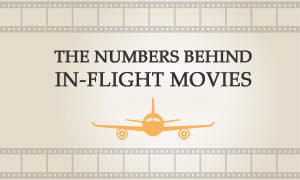 An often-forgotten window of release is the ‘Airline’ slot, where movies play on in-flight entertainment systems soon after their initial theatrical release.
An often-forgotten window of release is the ‘Airline’ slot, where movies play on in-flight entertainment systems soon after their initial theatrical release.
This is an area I’ve long wanted to study, but finding the raw data has proven tricky. However, over the past few months, I have been doing my best to collect copies of in-flight movie guides (physical and digital) and I think I now have a large enough collection for two airlines (Air Canada and Virgin Atlantic) to be able to share the findings.
I should note that this is not designed as a heads-up battle between these airlines. I would like to have included other carriers but these are the only two for which I have a complete enough dataset. See the Notes section at the end of this article for the exact months this research applies to.
How many movies are available in-flight?
Movies on flights are very popular, with the average Virgin Atlantic customer watching 2.8 movies per flight (I guess they’ll never know what happened at the end of the third movie). For comparison, in the UK in 2016 there were 168 million cinema admissions for 65 million people or the equivalent 2.6 cinema trips per person. And if we apply the Virgin average to their stated number of journeys, we can calculate that 1.4 million movies are watched every year, just by Virgin Atlantic customers.
Across the months I studied the two airlines, Air Canada offered an average of 127 movies per month and Virgin Atlantic offered an average of 55.
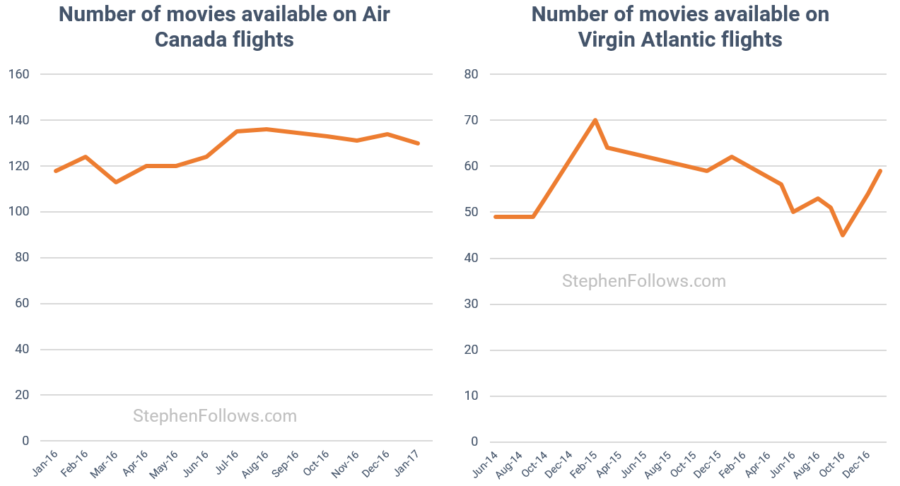
The genre of in-flight movies
On both airlines, drama is the most popular genre, followed by comedy. Perhaps unsurprisingly, horror movies are rarely scheduled on airlines and Virgin offer the following warning next to horror movies: “Warning: Certain scenes unsuitable for nervous flyers“.
Overall, you could classify Virgin Atlantic’s taste in movies as a little more mainstream and glossy than that of Air Canada.
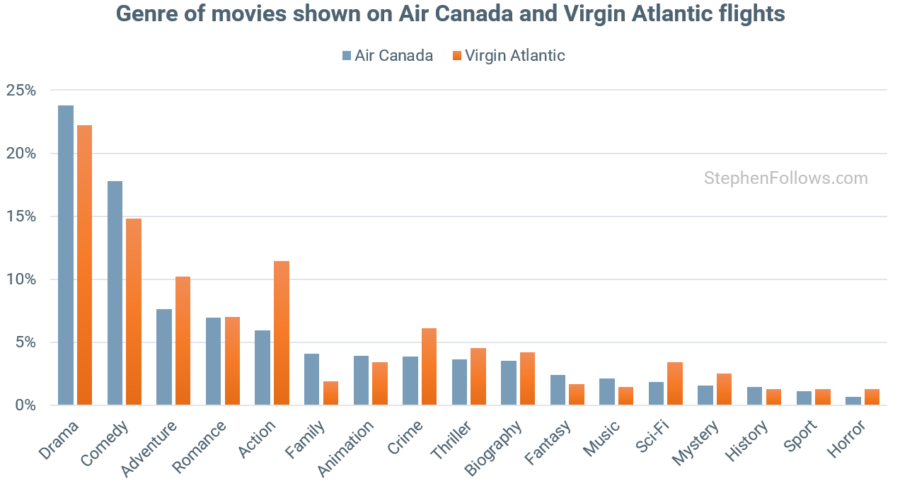
How old are the movies in-flight?
Virgin Atlantic focuses almost exclusively on very recent movies, with 99% of the movies shown in 2016 having been released in cinemas since 2013. The oldest movies screened during my study period were Rebel Without a Cause (1955), Ghostbusters (1984), Goodfellas (1990) and Titanic (1997).
By contrast, 13% of Air Canada’s movies were originally released in the previous century, thanks mostly to its ‘Classics’ strand. That said, within its ‘Contemporary’ strand are such oldies as The Sound of Music (1965), National Lampoon’s Vacation (1983), Gremlins (1984), Stand By Me (1986) and Ferris Bueller’s Day Off (1986).
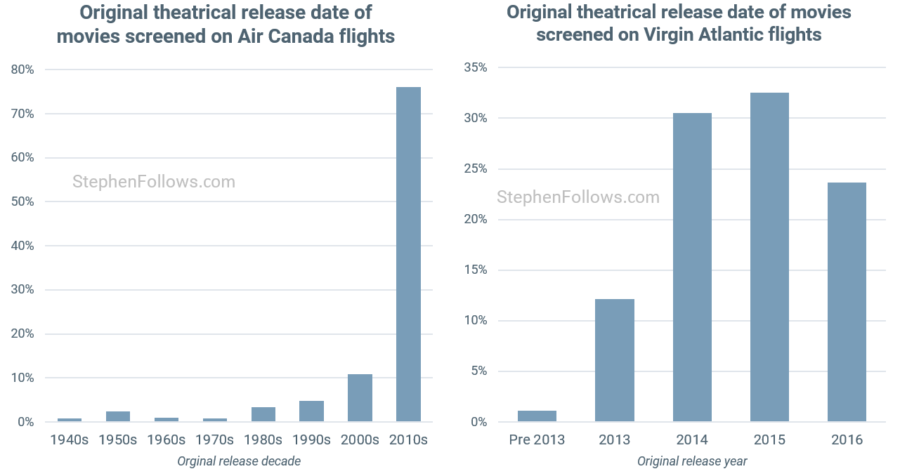
How long do we have to wait to see new movies in-flight?
This section requires a little a bit of industry background knowledge. If you know about shrinking release windows then you can skip the next few paragraphs.
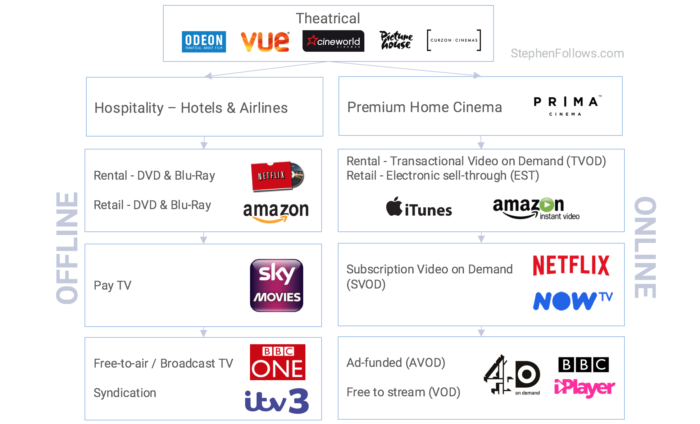
Each type of market a movie is released in (i.e. cinema, DVD, VOD, etc) is called a ‘Window of Release’. And the amount of time between each window is a hot topic in the film industry.
Not that long ago there was a ‘home rental’ window, in which VHS tapes (and then DVDs) could only be rented and not purchased, but this window got smaller and smaller, until the point where consumers could choose if they wanted to rent or buy the movie on the same day. This was a major contributing factor to the decline and bankruptcy of rental business Blockbuster Video and for that reason cinemas have been campaigning hard to keep the window between theatrical and home entertainment.
You can read more about this topic in previous articles, including Six ways the film business is changing, How movies make money: $100m+ Hollywood blockbusters, How long between UK and US movie release dates? and The numbers on 20 years of film rental.
Even though cinemas are fighting hard to keep movies off DVD and VOD for months after they’re in cinemas, they do not seem to mind the fact that movies are often on airlines very soon after their initial theatrical release. I suspect this is because few people are eschewing the cinematic experience in favour of flying transatlantic to watch movies on a small, scratched screen!
A very small number of movies were available on Virgin Atlantic flights before their US release, such as:
 Monsters: Dark Continent appears to have had its first public screenings of any kind on Virgin Atlantic flights in February 2015. The film was shown at the London Film festival in October 2014, but wasn’t properly released in public cinemas until April 2015 (in the US) and May 2015 (in the UK). That means that British Virgin Atlantic customers could have seen it a full three months before it was in UK cinemas.
Monsters: Dark Continent appears to have had its first public screenings of any kind on Virgin Atlantic flights in February 2015. The film was shown at the London Film festival in October 2014, but wasn’t properly released in public cinemas until April 2015 (in the US) and May 2015 (in the UK). That means that British Virgin Atlantic customers could have seen it a full three months before it was in UK cinemas.- Kill Zone 2 was screened on Virgin flights in November 2015 but only reached US audiences in June 2016.
These films are a few of the outliers as most movies only appear in-flight after their initial theatrical release. Sadly, it’s not possible to completely pin down the exact number of days between theatrical and in-flight premiers as the in-flight magazines are monthly, meaning we don’t have exact dates.
However, if we make a few assumptions then we can start to get an indication of the average delay. Below is a chart showing the number of days between the US public cinema release date and the first day of the month in which the movie was listed as being screened on Virgin Atlantic flights.
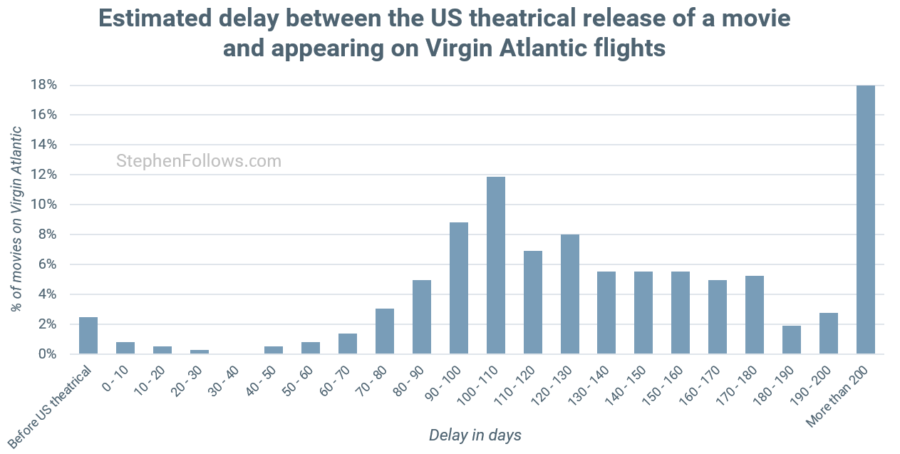
How different are in-flight movies from their theatrical versions?
Movies on planes are often slightly different versions from those released initially in cinemas (i.e. theatrically). The movie may be cut due to unsavoury content, due to local censorship laws or scenes may be removed which are deemed appropriate on a flight, such as plane crashes. In other cases, the in-flight edition could be a longer version of the movie, as is often the case with home entertainment releases.
Whilst it’s not possible to know for sure how the movies in my study were edited for their airline release, we can look to the running time to infer if there have been changes. While around two-thirds of these movies had the exact same running time as their theatrical release, 14% were shorter and 21% were longer.
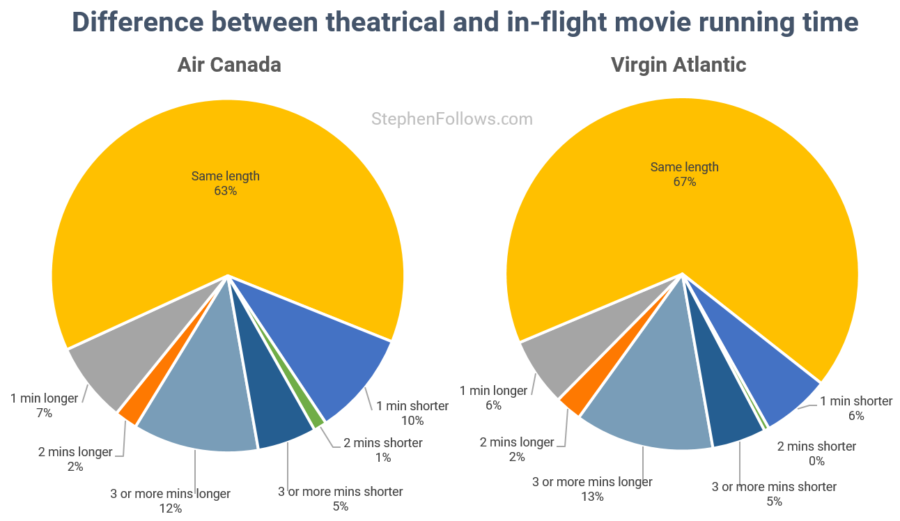
Short films
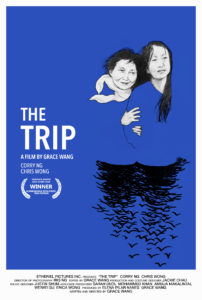 Air Canada has a strong support for short films, showing an average of 16 per month and providing an average of three and a half hours of short films every month. Half of the shorts are available on-board for two months, with only 11% appearing on flights for longer than three months. Just over half of the short films are Canadian in origin.
Air Canada has a strong support for short films, showing an average of 16 per month and providing an average of three and a half hours of short films every month. Half of the shorts are available on-board for two months, with only 11% appearing on flights for longer than three months. Just over half of the short films are Canadian in origin.
The short that was available the longest was ‘The Trip‘, a Canadian short which Air Canada passengers could watch between January and May 2016. The film is a good example of the type of shorts available and is described as: “A mother and daughter go on a weekend trip to a small town in the country. At a mystical and beautiful beach, they share a moment that catches both of them by surprise“.
Virgin appear to have added short films to their entertainment line-up in late 2014 and since then show an average of eight short movies a month, which adds up to an average of two hours of content.
You can choose from a selection of high-performing shorts (i.e. Oscar-winning films), shorts by big studios (i.e. Pixar) and some ‘shorts’ which would better be described as ‘DVD Extras’ (i.e. “An exclusive deleted scene from ‘The Inbetweeners 2’ with behind the scenes footage of the cast at the Virgin Atlantic’s headquarters” and “Richard Branson, Professor Brian Cox and our expert panel address the future of education in our latest Virgin Distributors event. Watch the highlights!”)
The cost of advertising ahead of in-flight movies
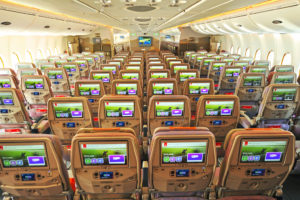 One of the very irritating aspects of watching movies on aeroplanes is the advertisements which run ahead of the movie. Compared to cinemas or commercial television, they are fairly sparse but, certainly for me, you are not expecting to see them on aeroplanes and so they tend to grate.
One of the very irritating aspects of watching movies on aeroplanes is the advertisements which run ahead of the movie. Compared to cinemas or commercial television, they are fairly sparse but, certainly for me, you are not expecting to see them on aeroplanes and so they tend to grate.
Despite this, they are a lucrative income stream for the airlines. Below are a few examples of recent advertising rates for the in-flight entertainment systems of major airlines:
- To have your advert play ahead of all movies (apart from foreign language and children movies) on a Virgin Atlantic flight will set you back £33,000 for a 30-second advert and £63,000 for a minute-long advert.
- The equivalent on Malaysian Airlines goes for $13,000 for 30 seconds and $23,200 for minute-long adverts (£10,485 and £18,711, respectively).
- To precede all movies and TV shows on KLM flights for one month costs €22,750 a month (£19,730)
- A 60-second spot on Air Canada will cost you CAD $38,000 a month (£20,391)
- A 30-second advert on Fly Dubai during boarding or landing would cost you $19,750 for a month (£15,929).
- Emirates charges $171,000 for a 30-second spot and $307,800 for a minute-long spot (£137,914 and £248,246, relatively).
Notes
 My research was conducted via the in-flight entertainment guides for both airlines. They claim to be the complete record of what’s shown, but it’s possible that there were late additions or omissions. For example, the entertainment guides I have suggest that Virgin Atlantic started showing shorts in late 2014, however I am pretty sure they showed short film content before then – a short I wrote (Sign Language) was shown on Virgin planes in 2012 after it won the Virgin Media Shorts competition.
My research was conducted via the in-flight entertainment guides for both airlines. They claim to be the complete record of what’s shown, but it’s possible that there were late additions or omissions. For example, the entertainment guides I have suggest that Virgin Atlantic started showing shorts in late 2014, however I am pretty sure they showed short film content before then – a short I wrote (Sign Language) was shown on Virgin planes in 2012 after it won the Virgin Media Shorts competition.
Due to availability of guides, the periods of time for the two airlines differ. I looked at movies shown on Air Canada flights in twelve months between January 2016 and February 2017 and Virgin Atlantic flights over fourteen months in 2014 (Jun, Sept, Oct), 2015 (Feb, March, Nov), 2016 (Jan, May, Jun, Aug, Sept, Oct, Dec) and 2017 (Jan).
I have reached out to the airlines featured in case they want to add or verify any of the info. I will update the article if and when new info comes in.
Epilogue
I am keen to do the same research for other airlines, but I struggled to find historic data. If anyone can connect me with entertainment guides or in-flight schedules for other airlines I would be very grateful.
Oh, and if you are one of the people who chooses to fly in order to see movies, may I suggest Emirates. I’ve not flown with them myself, but in my research I discovered that they won the best entertainment package category at the Skytrax Best Airline Awards for the past twelve years in a row.

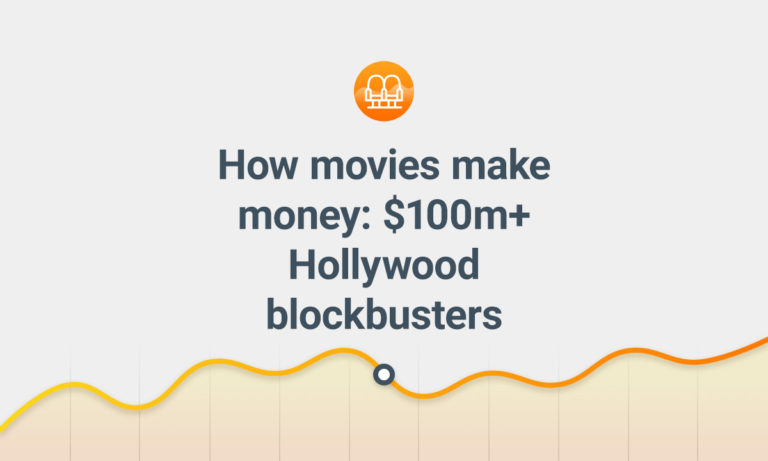



Comments
Very interesting data. I noticed that there was no “Documentary” category. Were there truly no documentaries offered as part of these packages? I find that very surprising.
Thanks.
There are docs but they are in the TV section, and I was focusing on film.
Very interesting read. Would you say this is a better release for dramatic short films?
Curious to know how you developed your data set? Are the guides publicly available?
Hi Leo. New data is available on the airline websites and historical data comes from either digital copies (mostly online via the publisher’s portfolio) or physical copies (from the airlines by request).
Hi Stephen,
I think a short film “Time To Kill” is showing on Virgin and/or Air Canada. Do you know how I might confirm that?
Great information. You may be able to get some data from APEX, the airline passenger experience association. Ask for Robin, Marketing Director.
GC
Great article and very interesting to learn about the advertising costs for airlines.
I think you might have a typo (perhaps an extra zero?) in the CAD to Pounds conversion costs.
“A 60-second spot on Air Canada will cost you CAD $338,000 a month (£20,391)”
Thanks, Atticus. I’ve fixed it now.
Thank you Stephen! This is very interesting research, I always get excited to see the films different airlines have. I really enjoyed Virgin Atlantic, but my list also contains Turkish Airlines and American Airlines, they had fresh new releases I didn’t have a chance to see before the flight.
Thanks Stephen. Really interesting.
I flew to NZ a couple of years ago on Air Malaysia and was not disappointed on the selection of movies available. In fact, I’m pretty sure I watched them non-stop with the exception of the transfer at Kuala Lumpar.
Bob